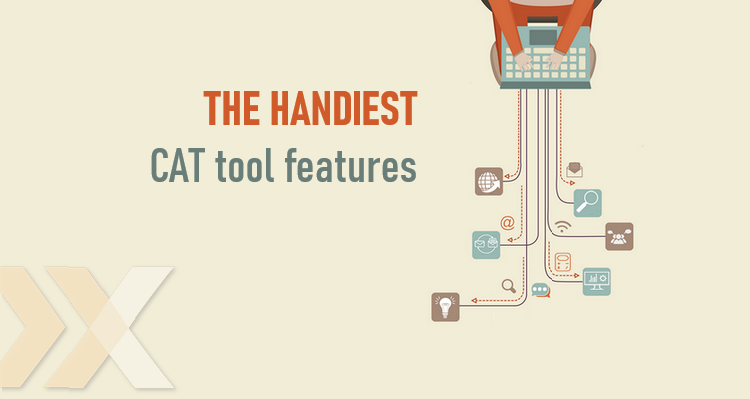
In this series of articles about CAT tools, we’ve already explained their advantages and dispelled some of the myths, presented the big players on the market and looked into the factors that influence the selection of the ideal CAT tool. Today, we’ll delve into how translation tools are capable of helping a translator work with more speed, ease and effectiveness.
All this is possible thanks to various features offered by CAT tools, as we’ll describe in more detail.
Note: We describe individual features based on the memoQ CAT tool. Identical or similar features are available in other tools.
Translation memory
The basic feature of CAT tools is Translation memory (TM). This is a database of translated sentences (segments), which is created during the translation.
While the translator is working, the CAT tool constantly compares the translated text with data in the TM, and if it finds full or partial (fuzzy) match, it’ll display it in Translation results.
For each result, a match rate in percent is also displayed, and the results are normally arranged from the highest match rate to the lowest. Fuzzy matches are also compared to segments in the TM, and differences are underlined.
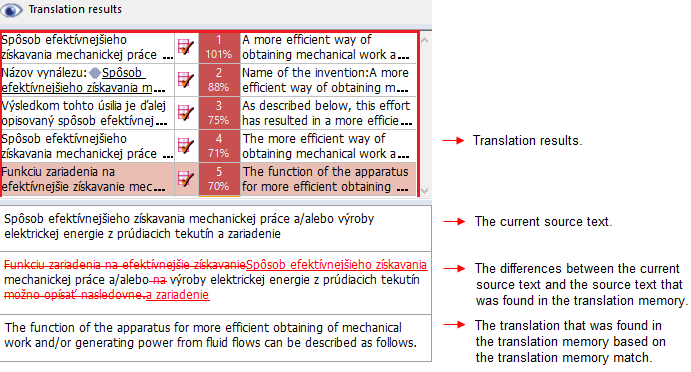
Term base
CAT tools offer the possibility of creating term bases (TB) that search for individual terms and display them among translation results.
This feature is useful if you have your own specific terminology or if you want to create and build your own term base (we’ll talk about this in our next article). It can also be used if there are multiple translators working on the same project and it’s important to keep consistency regarding the main terms.
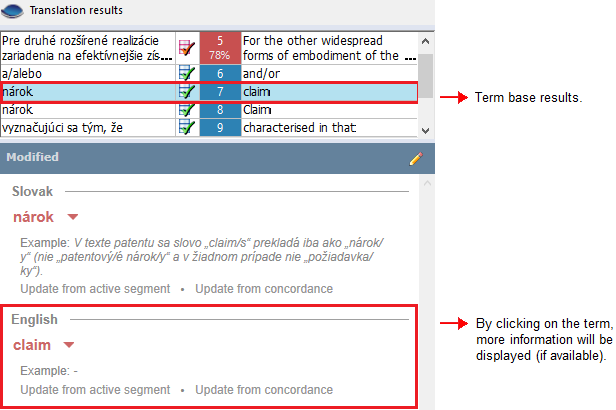
To learn more about term bases and translation memories, click here.
Concordance
In addition to TM matches and term bases displayed in the translation results panel, the user can search for individual words or expressions in the TM using the Concordance feature.
It’s useful mainly if there’s no TM match for a given segment. Thanks to this feature you can easily find out if an expression has been translated in the past and what the translation was in various segments and contexts. You can start the search by pressing the keyboard shortcut Ctrl + K, which will display a list with other occurrences.
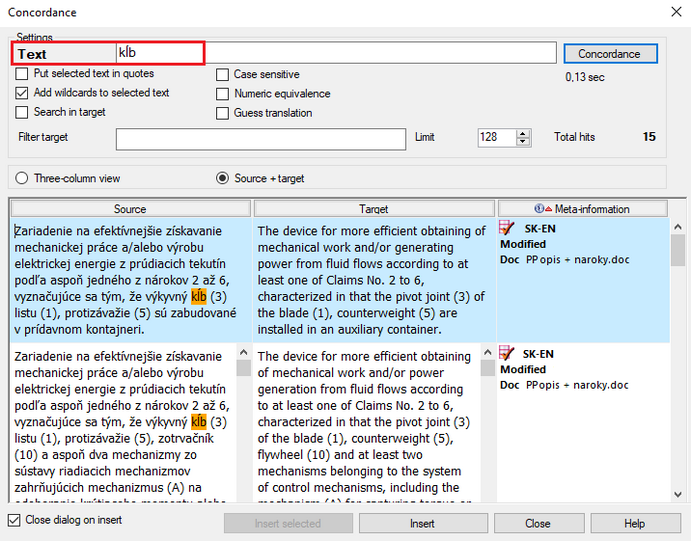
Statistics and analysis
Another handy feature, Statistics, enables a CAT tool to calculate the total count of the text before and after translation (number of segments, words, and characters), or to recalculate it using various settings. It can compare texts with existing TMs, and determine in advance how much of the TM can be used productively. It can also take into consideration similarities within the documents (Homogeneity or Internal fuzzy matches). This feature helps you estimate more precisely the time you’ll need for translation.
How?
The statistics feature produces an analysis which divides words/characters into categories based on their match rate. Each word can only fall into one category.
For example, the analysis may use these categories:
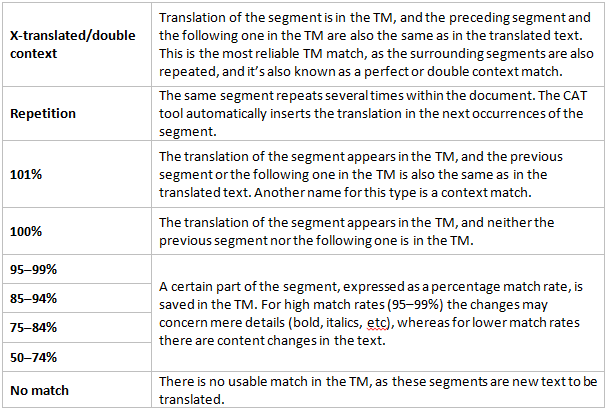
In general, the translator can work faster when translating segments that are (even if only partially) saved in the TM, or if the text contains many similarities. This means the task won’t take you as long as if you were to translate the whole text in MS Word. It is usually effective to work with matches higher than 75% (depending on the language).
Based on this analysis, you can calculate the weighted word count to find out the real time you’ll need for translation. This is an averaged count, for example: new text = 1 word; 99–75% match = 0.5 words; 100% match = 0.3 words, etc. This means that while a document may have 4,000 words, after taking into account the analysis it will drop to 3,010 weighted words, so it’ll only take as much time as if you translated 3,010 new words.
Preview options
If you’d like to see the translated text in real layout, turn on HTML Preview (View Pane). In the preview, the currently-translated segment will be marked, and after you confirm the translation in the editor, the source text will be replaced by your translation. Thanks to preview, you can already see what the translated text looks like while you’re working. This layout is not always completely identical to the final output, but it’s very similar. It works for MS Word, Excel, PowerPoint, HTML, and XML files.
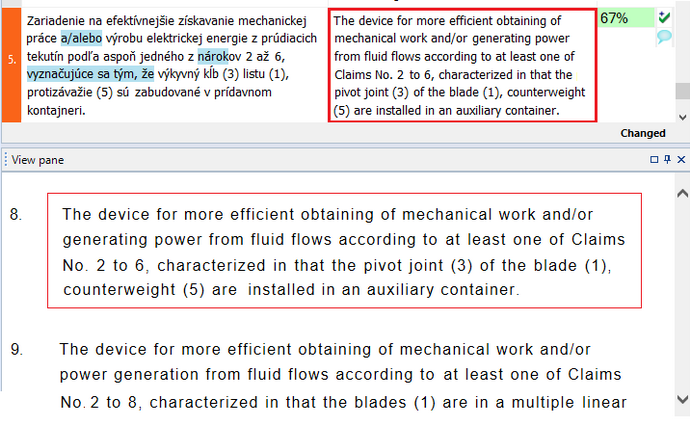
If you’re translating more than one document, you might find it impractical to open these one by one and work with them separately. To avoid this, you can create a View. This feature enables you to merge multiple documents and work with them as with one document. It’s especially useful for filtering/selecting certain segments according to required criteria.
For example, you can create a view of all repetitions or segments according to their status (e.g. not translated or confirmed). You can also create a view of only a part of the document – from selected segments, etc.
The CAT tool will create the view by “taking out” segments from all the documents and filtering them according to the set criteria. The view will display on a separate tab. You can work with it as you would with an ordinary document. All the changes made in the view will automatically be implemented in the individual documents.
Spell check
Before delivering your translation to the client, make sure to use spell check to reveal possible typos and grammatical mistakes. To turn spell check on, press F7 (just like in MS Word). A dialog box will open, displaying parts of the text with potential errors and their suggested corrections. Irrelevant errors can be ignored all at once.
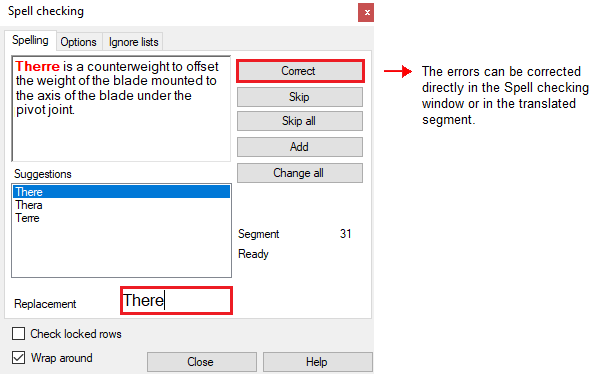
Quality assurance
The most important feature of the final check of the translation is Quality Assurance (QA). This consists of an automatic machine check of a translation and focuses on the following elements:
- numbers (missing/extra numbers or incorrect number format),
- consecutive spaces,
- incorrect punctuation,
- differences in the length of the source and target segments,
- translation consistency (uniformity of identical segments),
- correct use of terms from term bases, etc.
QA displays a list of warnings about potential errors that you’ll need to assess, and decide if they are real errors that need to be corrected; if not (false positives) they can be ticked as ignored.
CAT tools offer many more features than we’ve described above. As with all software, the better we master it, the more it speeds up our work.
And what about you? Do you have a favourite feature you wouldn’t want to do without? Share your experience with us in the comments.

I began working at LEXIKA as a university student in 2006. Back then e-mail communication was teething and the fax was a common means of communication. The familial atmosphere has grown on me and I took a liking to LEXIKA. I spent several years working at the front desk overseeing certified translations. I later became a project manager. Currently, I take care of specialized translations, interpreting projects, and other language services. I have been working in our fantastic team for the longest period of time. Moreover, I take care of training new employees and creating our internal documentation to keep track of our activity for everyone. ?
Share it!
 28.07.2020
28.07.2020